
Any marketing that requires electronic devices to convey promotional messaging and measure its impact In practical terms, digital marketing is marketing campaigns that appear on a computer, phone, tablet, or other device. And it can take many forms, including online video, display ads, and social media posts.
Digital marketing is usually compared to “traditional marketing” like magazine ads, billboards, and spam. Oddly, television is typically lumped in with traditional marketing.
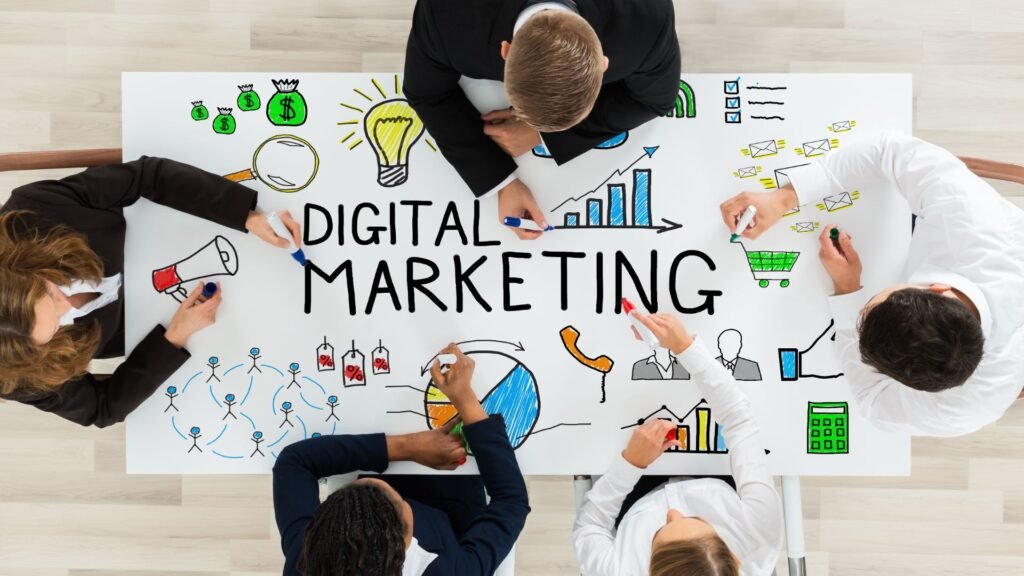
Did you recognize that nearly three-quarters of USA citizens go browsing on a daily basis? Not only that, but 43% continue quite once each day, and 26% of them remain online “almost constantly.”
These figures are even higher for mobile internet users. According to research, 89% of US citizens go browsing at least daily, and 31% are online almost constantly. As a marketer, it’s essential to take advantage of this with a web advertising presence.
What is Digital Marketing?
Digital marketing is the promotion of businesses using the web and other sorts of data communication. It includes not only email, social media, search engine optimization, and web-based advertising but also text and multimedia messages.
Essentially, if a marketing campaign involves data communication, then it’s definitely digital marketing.
Inbound Marketing vs Digital Marketing
Digital marketing & inbound marketing are confusing terms. Digital marketing uses many of the same tools as inbound marketing—email and online content—to reach a couple of users. Both exist to capture the eye of prospects and turn them into customers. However, the two approaches take different views of the connection between the tool and, therefore, the goal.

Digital Marketing focuses on how each individual tool can convert prospects. A company’s digital marketing strategy may use multiple platforms or focus all its efforts on 1 platform. While Inbound marketing may be a holistic concept. Unlike digital marketing, it considers the goal first, then looks at the available tools to work out which can effectively reach target customers, and then at which stage of the sales funnels ought to happen.
The most important thing to recollect about digital marketing and inbound marketing is that you don’t need to choose from both. Moreover, they work best together.
Inbound marketing provides a mindmap and goals for digital marketing efforts, ensuring that every platform works toward a goal.
B2B Vs B2C Digital Marketing
Digital marketing works for B2B also as B2C companies, but best practices differ significantly between the two.
B2B clients tend to possess longer decision-making processes and, thus, longer sales funnels. Therefore, Relationship-building strategies work better for these clients.
Meanwhile, B2C customers tend to reply better to short-term offers and messages. B2B transactions are usually supported by logic and evidence, which is what skilled B2B digital marketers present. In B2C, content is more likely to be emotionally based, specialising in making customers feel good about a few purchases.
B2B marketing decisions tend to wish for quite 1 few people’s input. In marketing materials, it best drives these decisions and tends to be shareable and downloadable. B2C customers, on the other hand, favor one-on-one connections with a brand.
Of course, there are exceptions to each rule. A B2C company with a high-ticket product, like a car or computer, might offer more informative and high-quality content. Your strategy must always focus on your own customer base. It doesn’t matter whether you’re B2B or B2C.
What are the Types of Digital Marketing?
There are as many different types of digital marketing as ways of interacting with digital media. Here are a couple of major examples:
Search Engine Optimization
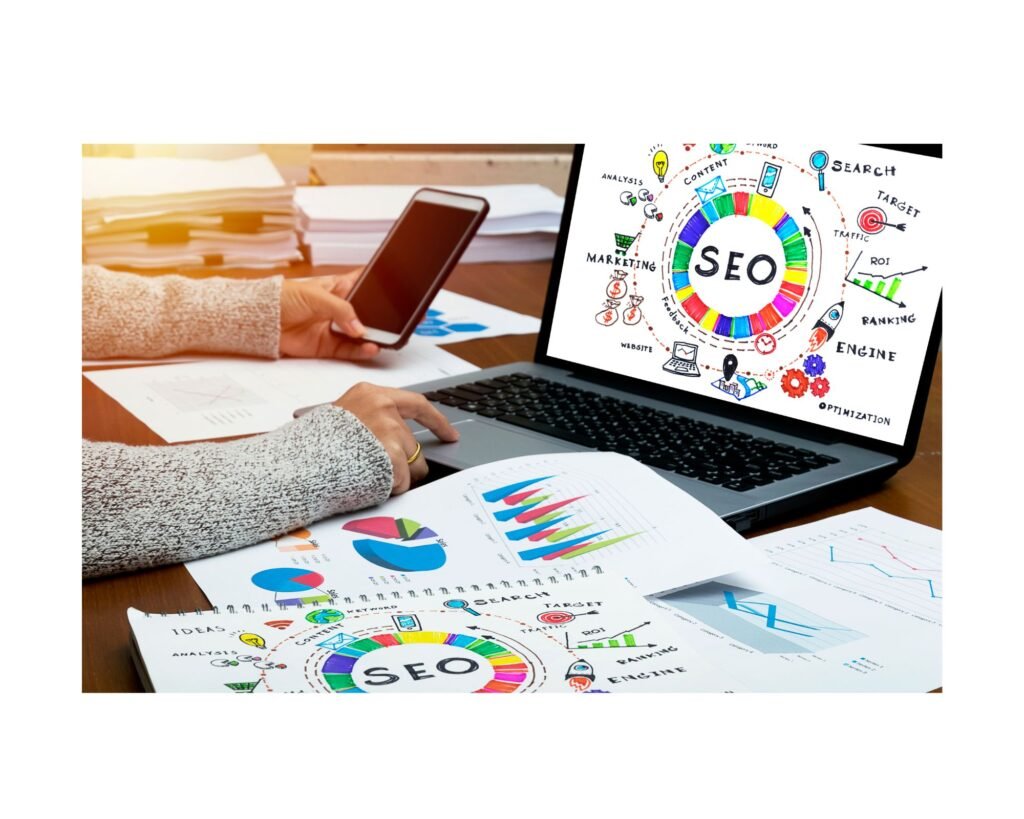
In simple words, SEO is a marketing tool instead of itself. It is “the art and science of creating sites attractive to look engines.”
The “art and science” part of SEO is vital. SEO may be a science because it requires you to research and weigh different contributing factors to realize the best possible ranking. Today, the foremost important elements to think about when optimizing an internet page include:
- Quality of content
- Level of user engagement
- Mobile-friendliness
- Number and quality of inbound links
- The strategic use of those factors makes SEO a science, but the unpredictability involved makes it an art.
SEO has no quantifiable rubric or consistent rule for ranking highly. Google changes its algorithm almost constantly. Therefore, it’s impossible to form exact predictions. You’ll closely monitor your page’s performance and make adjustments accordingly.
Content Marketing
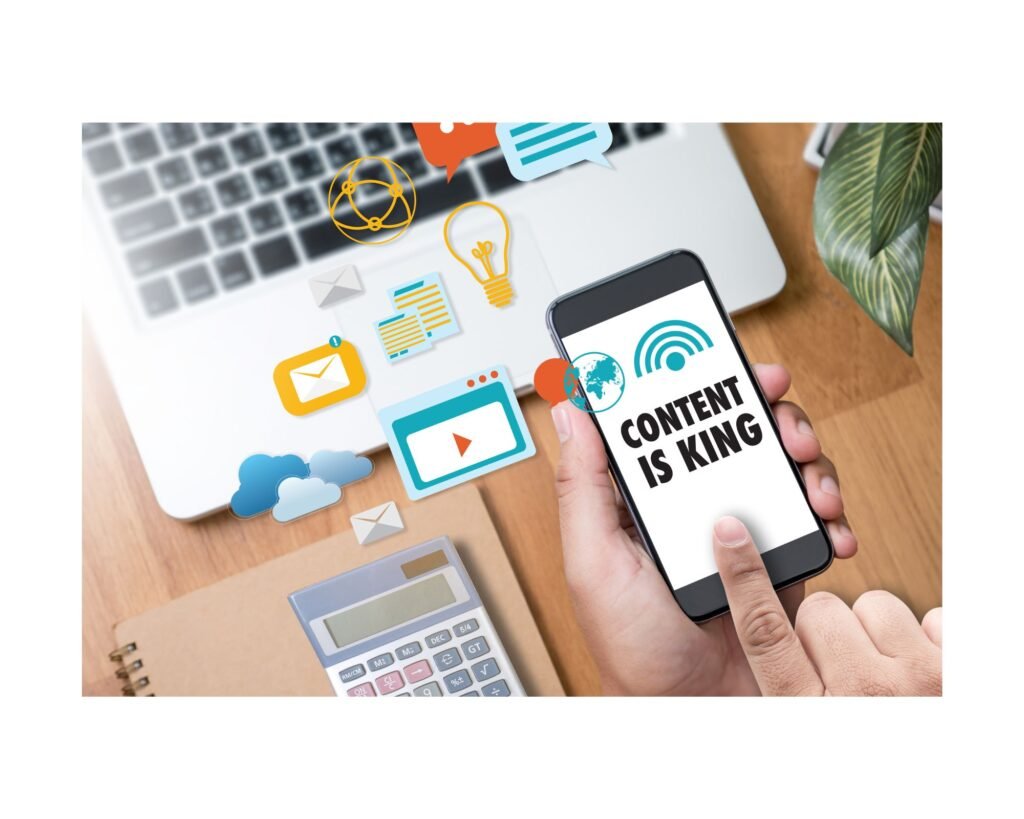
SEO may be a major thing about content marketing, a technique that supports the distribution of relevant and valuable content to an audience.
In any marketing strategy, the content strategy aims to draw leads that ultimately convert into customers. However, it does so differently than traditional advertising. Rather than enticing prospects with the potential value of a product or service, it offers value free of charge within the sort of writing.
Content marketing matters, and there are many stats to prove it:
- 84% of consumers expect companies to supply entertaining and helpful content experiences.
- 62% of companies with a minimum of 5,000 employees produce content daily.
- More than 92% of businesses believe their company values content as a crucial asset.
As effective as content marketing is, it is often tricky. Content marketing writers got to be ready to rank highly in program results while engaging people who will read the fabric, share it, and interact further with the brand. When the content has relevance, it can establish strong relationships throughout the pipeline.
Social Media Marketing
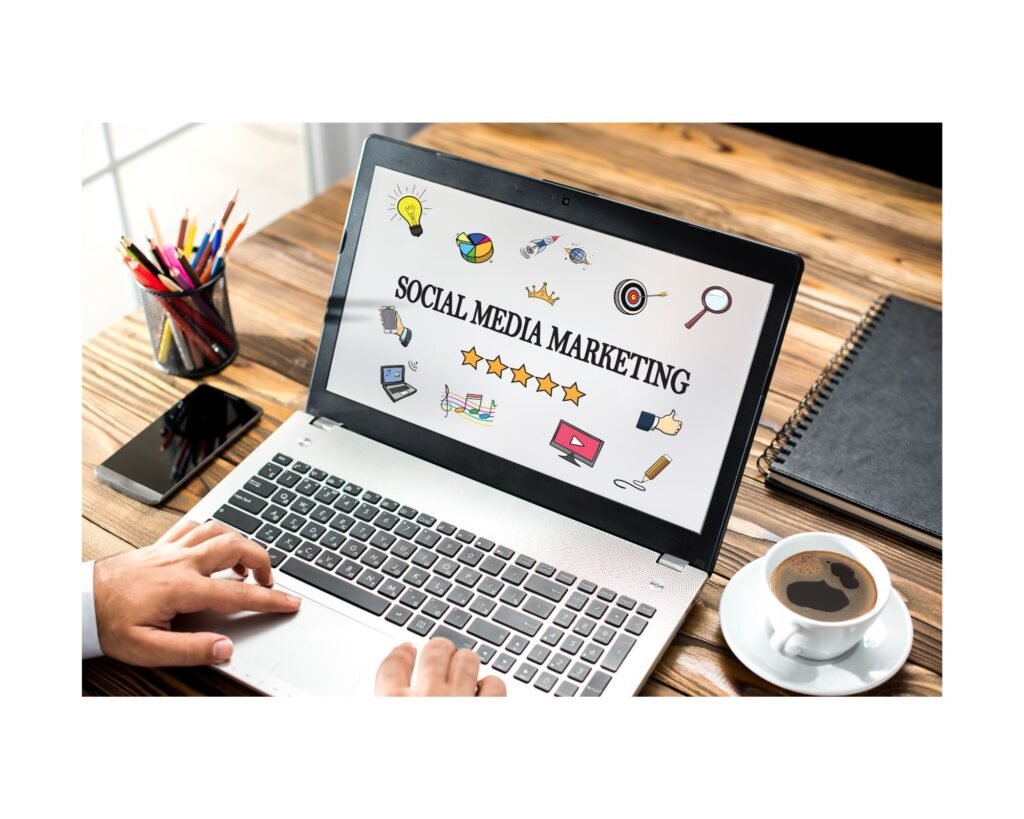
Social media marketing means driving the audience and creating brand awareness by engaging people in online discussions. The most popular social media marketing platforms are Facebook, Twitter, and Instagram, with LinkedIn and YouTube shortly behind.
Because social media marketing involves active audience participation, it’s become a well-liked way of getting attention. it is the hottest content medium.
B2C marketers at 96%, and it’s gaining ground within the B2B sphere also. Also, social media marketing offers built-in engagement metrics, which are extremely useful in helping you know how well you’re reaching your audience. You get to decide which interactions mean the most to you, whether it means the number of shares, comments, or total clicks to your website.
The direct purchase might not even be a goal of your social media marketing strategy. Many companies use social media marketing to start dialogues with audiences instead of encouraging them to spend money directly. This is often especially common in brands that focus on older audiences or offer unsuitable products and services for impulse buys. It all depends on your company’s goals.
Pay-Per-Click Marketing

Pay-per-click, or PPC, is posting a billboard on a platform and paying whenever someone clicks.
How and when people see your ad may be a bit more complicated. When a spot is out there on an inquiry engine results page, also referred to as a SERP, the engine may fill the spot with what’s essentially a moment auction. An algorithm prioritizes each available ad-supported in a variety of things, including:
- Ad Quality
- Keyword relevance
- Landing page quality
- Bid Amount
PPC campaigns mostly have one or more target actions that viewers are meant to finish after clicking a billboard. These actions are referred to as conversions and are often transactional or non-transactional. A sale may be a conversion, but so is a newsletter signup or a call to your headquarters.
Whatever you select as your target conversions, you’ll track them via your chosen platform to ascertain how your campaign is doing.
Affiliate Marketing
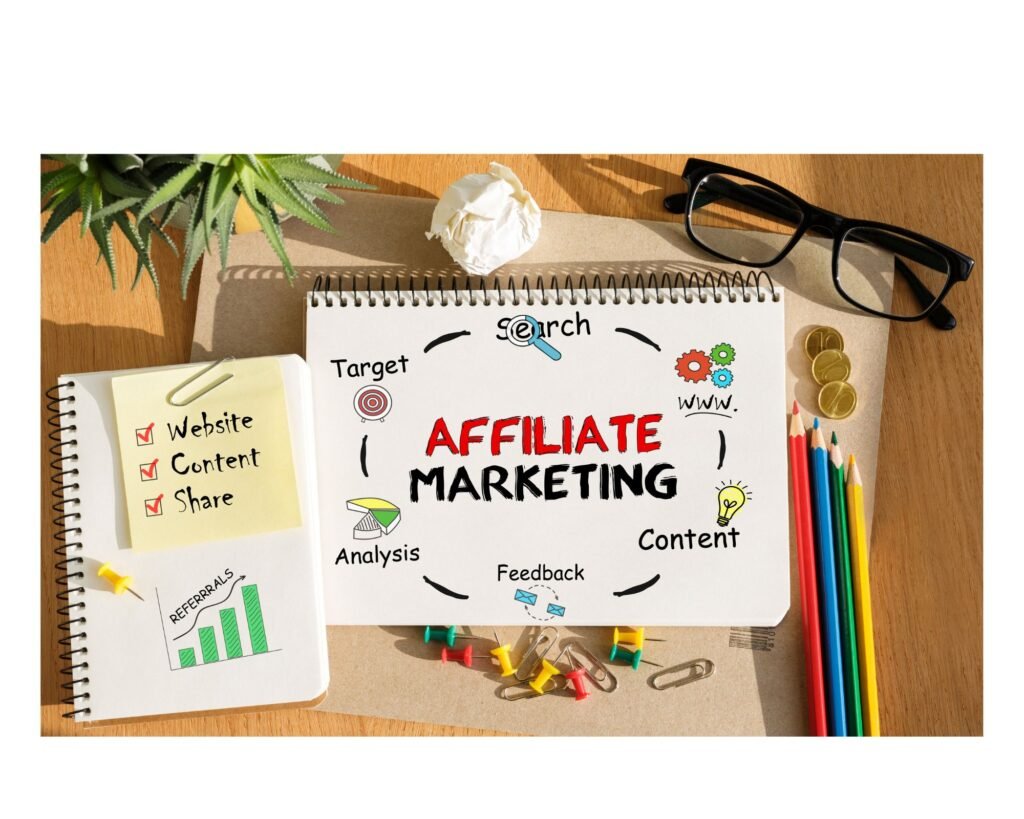
This marketing technique lets someone make money by promoting another person’s business. You’ll be either the promoter or the company that works with the promoter, but the method is the same in either case.
It works by employing a revenue-sharing model. If you are the affiliate, you get a commission whenever someone purchases the item you promote. If you are the merchant, you pay the affiliate for each sale they assist you in creating.
Some affiliate marketers prefer to review just one company’s products, perhaps on a blog or other third-party site. Others have relationships with multiple merchants.
Whether you would like to be an affiliate or find one, the primary step is to form a reference to the opposite party. You’ll use a platform designed to attach affiliates with retailers. Otherwise, you can start or join a single-retailer program.
If you are a retailer and you select to figure directly with affiliates, there are many things you can do to make your program appealing to potential promoters. You must supply those affiliates with the tools they need to succeed. That has incentives for nice results, marketing support and pre-made materials.
Native Advertising

In this marketing method, the goal is to blend in with its surrounding content in order. And it’s less blatantly obvious as advertising.
Marketing Automation
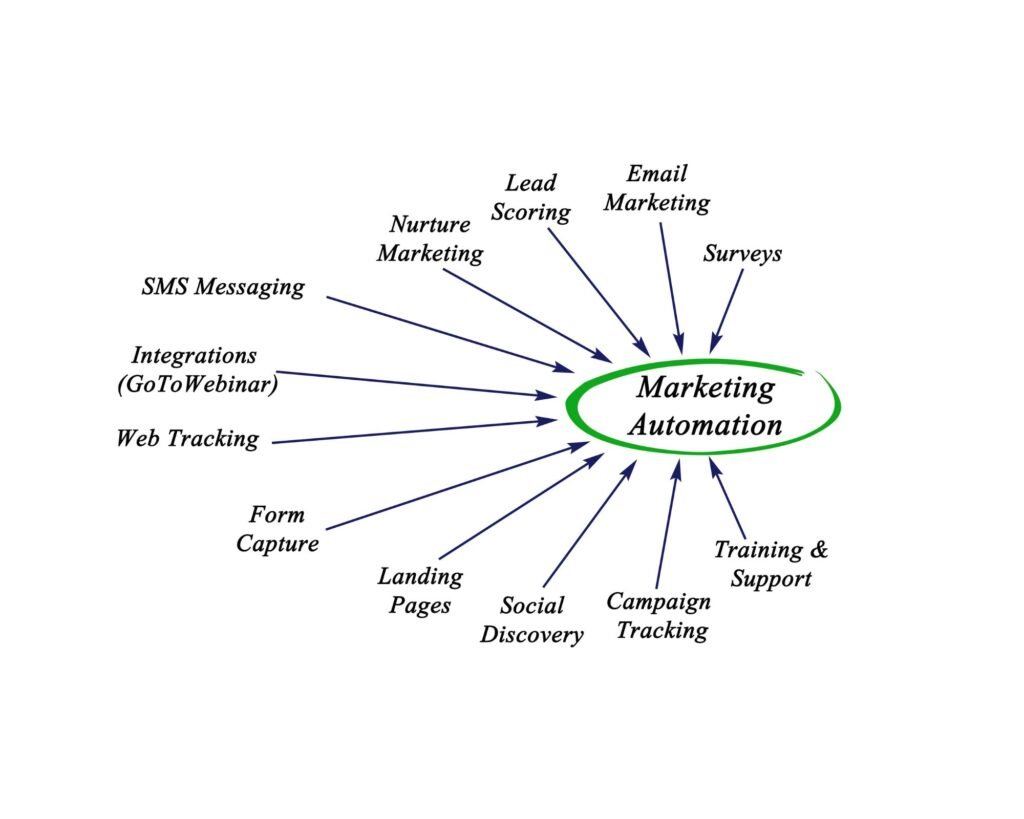
This marketing technique uses software to power digital marketing campaigns, improving the efficiency and relevance of advertising.
According to statistics:
- 90% of consumers find personalisation “very” or “somewhat” appealing.
- 81% of consumers would like the brands they engage with to know them better.
- 77% of companies believe in the worth of real-time personalization, yet 60% struggle with it.
- Marketing automation lets companies continue with the expectation of personalization. It allows brands to:
- Collect and analyze consumer information.
- Design targeted marketing campaigns.
- Send and post-marketing messages at the proper times to the proper audiences.
Email Marketing
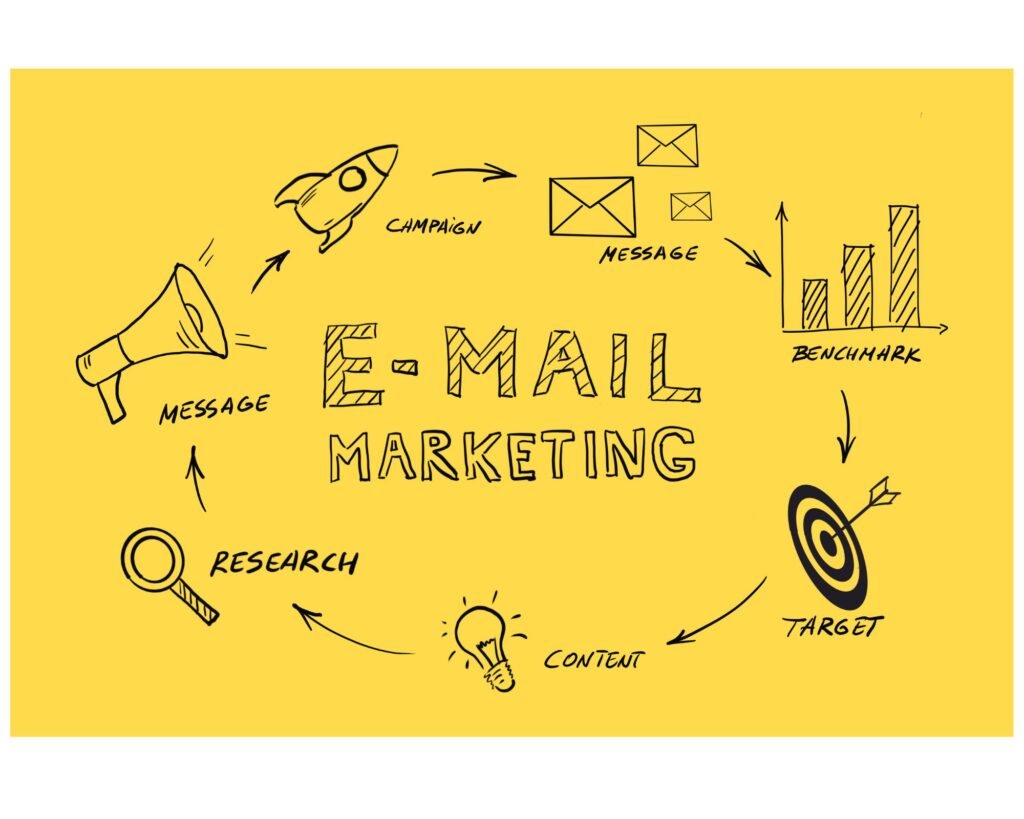
Email marketing is simple; it is just you sending a promotional message and hoping your prospect clicks thereon. However, the execution is far more complex. First of all, you must ensure that your emails are wanted. This suggests having an opt-in list that does the following:
- Individualizes the content, both within the body and within the subject line.
- States clearly what quiet emails the subscriber will get.
- Offers a transparent unsubscribe option.
- Integrates both transactional and promotional emails.
- You want your prospects to ascertain your campaign as a valued service, not even as a promotional tool.
Email marketing may be a proven, effective technique all on its own: 89% of surveyed professionals named it their best lead generator.
It is often even better if you incorporate other techniques like marketing automation, which allows you to segment and schedule your emails so that they meet your customer’s needs more effectively.
Benefits of Digital Marketing
Digital marketing has become prominent and largely popular because it reaches such a good audience of individuals, but it also offers a variety of other advantages. These are a couple of advantages.
Broad Geographic Reach
When you post a billboard online, people can see it regardless of where they are. It makes it easy to grow your business’s market reach.
Cost Efficiency
Digital marketing not only reaches a broader audience than traditional marketing can, but it costs less. Unlike conventional marketing overhead costs for newspaper ads, television spots, etc., digital marketing is very cost-effective. They also offer you less control over whether your target audiences will see those messages in the first place.
With digital marketing, you can create just one content piece that pulls visitors to your blog as long as it’s active. You’ll create an email marketing campaign that delivers messages to targeted customer lists on a schedule, and it is easy to vary that schedule or the content if you want to try.
Ultimately, digital marketing gives you far more flexibility and customer contact for your ad spend.
Quantifiable Results
To know whether your marketing strategy works, you must seek out what percentage of customers it attracts and how much revenue it ultimately drives. But how does one do this with a non-digital marketing strategy?
There’s always the standard option of asking each customer, “How did you discover us?”
Unfortunately, that does not add to all industries. Many companies aren’t getting to have one-on-one conversations with their customers, and surveys don’t always get complete results.
With digital marketing, results monitoring is straightforward. Digital marketing software and platforms can automatically track the desired conversions you get, whether this means open email rates, visits to your home page, or direct purchases.
Easier Personalization
Digital marketing allows you to collect customer data in a way offline marketing can’t. Data collected digitally tends to be far more precise and specific.
Imagine you offer financial services and need to send special offers to people who have checked out your products. You recognize you will get better results if you target the proposal to the person’s interest, so you opt to organize two campaigns.
One is for young families who have checked out your life assurance products, and therefore, the other is for millennial entrepreneurs who are considering your retirement plans.
How does one gather all of that data without automated tracking? What percentage of phone records would you have to travel through? What percentage of customer profiles? And the way does one know who has or hasn’t read the brochure you sent? However, with digital marketing, all those metrics can be at your fingertips.
More Reference to Customers
Digital marketing can allow you to communicate together with customers in real-time. Also, it lets them communicate with you.
Think about your social media strategy. It’s great when your audience sees your latest post, but it’s even better once they discuss it or share it. It merely means that more buzz surrounds your product or service and increases visibility whenever someone joins the conversation.
Interactivity benefits your customers also. It levels up their engagement as they actively participate in your brand’s story. That sense of ownership can create a robust understanding of brand name loyalty.
Easy & Convenient Lead Conversions
Digital marketing applications let your customers take action immediately after viewing your ad or content. The first immediate result you’ll hope for with traditional advertisements may connect after seeing the ad. However, how often does someone have the time to succeed in bent a corporation while doing the dishes, driving leads down the highway, or updating records at work?
With digital marketing, they will click a link or save a blog post and move along the sales funnel directly. They could not make a sale immediately, but they’ll stay connected with you and allow you to interact with them further.
Digital Marketing Creates Growth. How?
Digital marketing should be one of the first focuses of any business’s overall marketing strategy. Never before has there been a way to remain in such consistent contact with your customers, and Zip else offers the extent of personalization that digital data can provide.
The more you embrace the chances of digital marketing, the more you will be ready to realize your company’s growth potential.
FAQs
Q1. Which Certification Is Best For Digital Marketing?
A. There is no single “best” certification for digital marketing, but some widely recognized ones include Google Ads Certification, Google Analytics Individual Qualification (IQ), Facebook Blueprint Certification, and HubSpot Inbound Marketing Certification. Choose based on your career goals and interests.
Q2. What Are The 5 Ds Of Digital Marketing?
A. The 5 D’s of digital marketing represent five essential aspects crucial for successful digital marketing strategies. They are Digital Devices, Digital Platforms, Digital Media, Digital Data, and Digital Technology.
Q3. Is Digital Marketing A Good Career?
A. Yes, digital marketing can be a good career choice. According to Google Trends search data analysis, digital marketing skills are among the most sought-after job skills, making it a trending field to explore. If you aim to boost your earning potential, you should consider learning digital marketing. The significant demand for digital marketing professionals has led to higher salaries for individuals in this domain. Taking advantage of this high demand can open up rewarding career opportunities and potentially increase remuneration.
Conclusion
From SEO and content marketing to social media and analytics, each aspect is vital in building a successful digital marketing campaign. By embracing the opportunities presented by the digital landscape, businesses can stay ahead of the curve and achieve remarkable growth and success in today’s competitive market.
So, remember to stay adaptable, data-driven, and customer-centric, and let your digital marketing endeavours propel your brand to new heights. To learn more about digital marketing, explore our TGB blogs. Happy marketing!

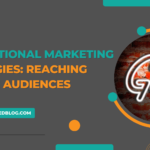
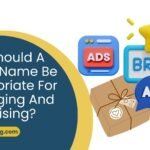
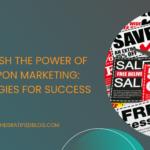
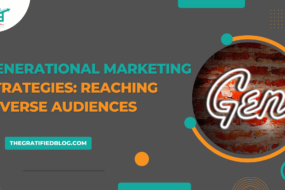
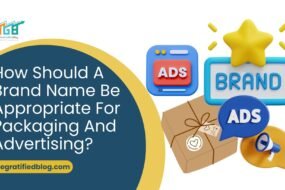
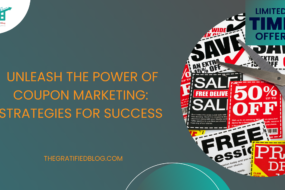
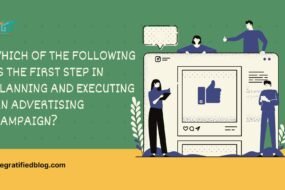
No Comments